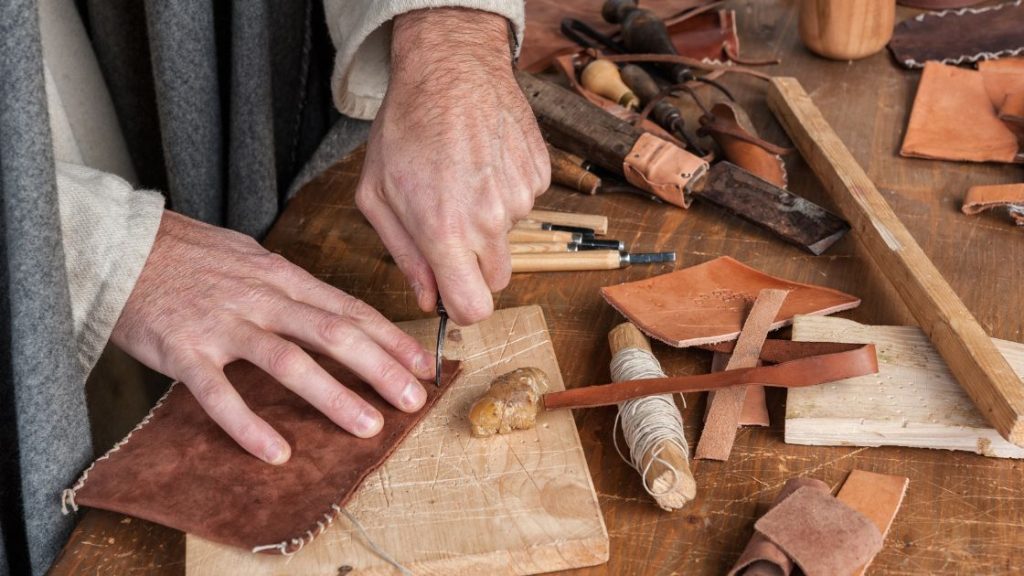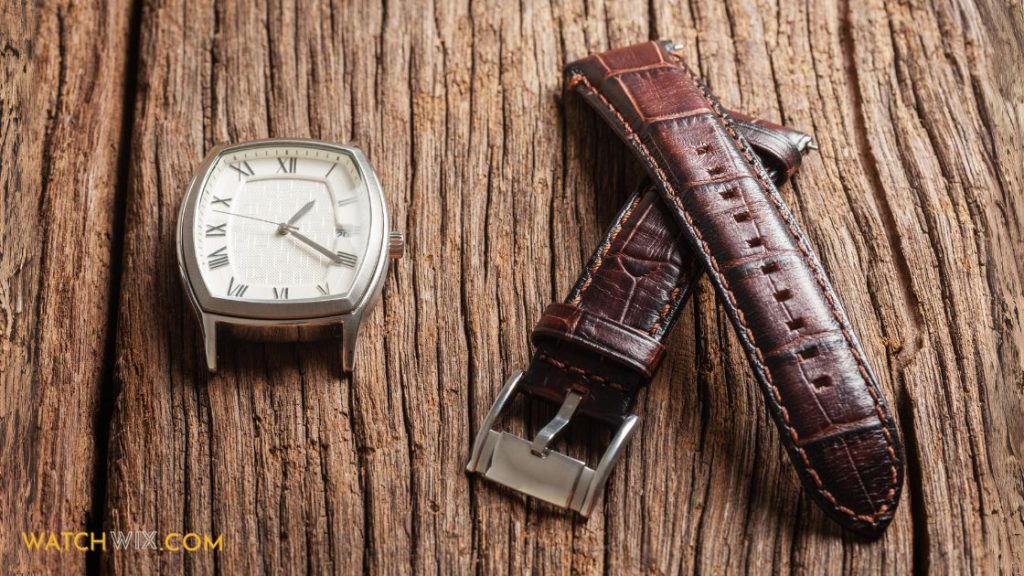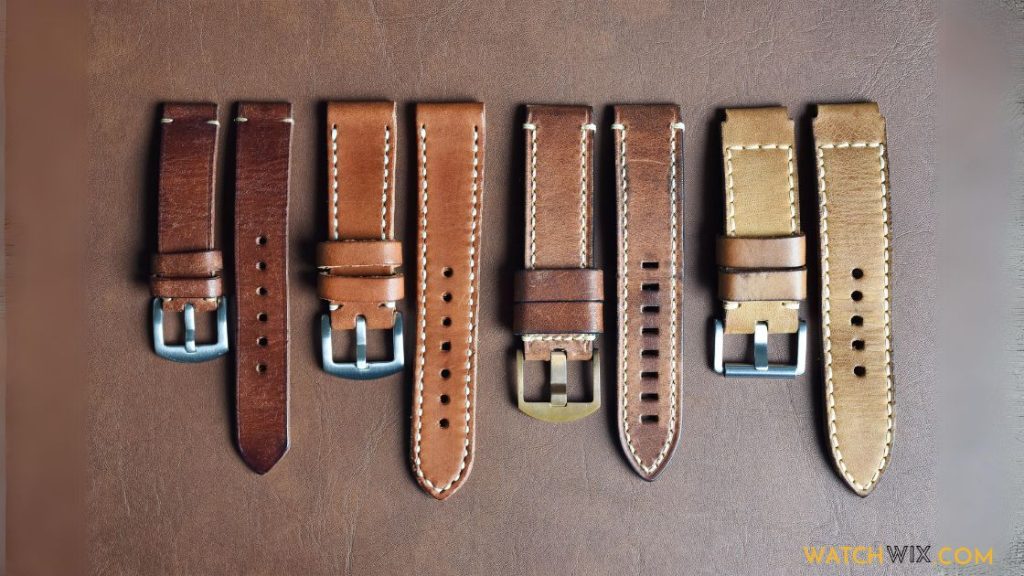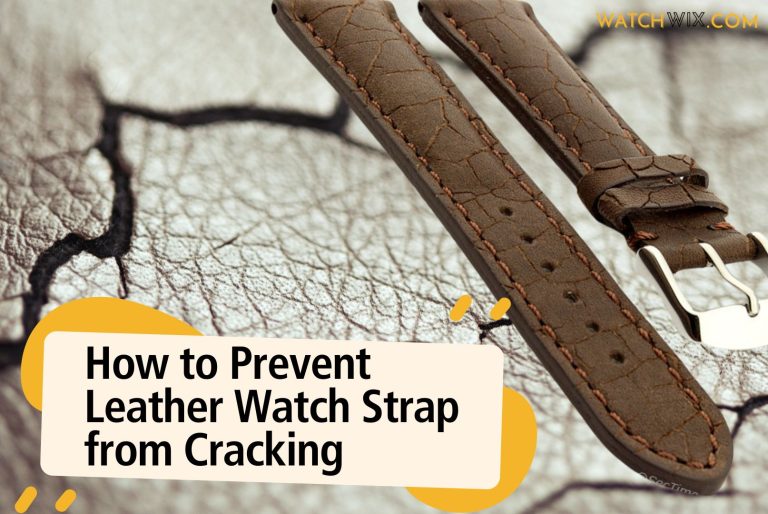How to Properly Care Watch Leather Strap | Comprehensive Guide to Protect Leather Straps
Hey watch enthusiasts! Have you ever wondered about the secret to keeping your leather watch strap looking sleek and timeless? In this atticle, we’re diving deep into the world of leather care. From understanding the intricate process of leather production to uncovering why this luxurious material demands special attention, we’ve got you covered. Following is the coverage of this article,
- How Leather Material Made
- Why does Leather Require Special Care?
- Step by Step Guide to Clean a Leather Watch Strap Properly
- Why Leather Watch Straps Get Cracked?
- How to Protect My Watch Leather Strap for Long Use?
- How to Overcome Bad Smell from Leather Watch Strap
- Does Leather Watch Straps Waterproof?
- Does Leather Watch Straps Stretch?
- How to Restore a Damaged Leather Strap
- How to Soft Leather Strap
- Best Practices for Watch Leather Strap Long Life
- How to Clean a Rubber Watch Strap?
How Leather Material Made
Leather is made through a multi-step process starting with the preparation of raw animal hides, which are cured, soaked, and then treated with lime to remove impurities and loosen hair. Following hair removal, fleshing, and splitting, the hides undergo tanning, a critical step where chemicals stabilize the collagen fibers, preventing decomposition. The leather is then neutralized, finished, and dried before being conditioned for softness and flexibility.
Knowing how leather is made is important to properly care it. Knowledge of the production process helps us to appreciate the material’s unique characteristics and vulnerabilities. Proper care, such as avoiding excessive moisture, direct sunlight, and harsh chemicals, can extend leather’s lifespan and maintain its aesthetic appeal.

Why does Leather Require Special Care?
Leather requires special care because it is a natural material that can be damaged by moisture, heat, and harsh chemicals. Without proper maintenance, leather can dry out, crack, and lose its natural beauty and durability. Additionally, leather is susceptible to stains and discoloration, so it needs to be cleaned and conditioned regularly to preserve its appearance and longevity.
Step by Step Guide to Clean a Leather Watch Strap Properly
Cleaning a leather watch strap requires care to preserve its quality and appearance. Here’s a step-by-step guide for you to get a detail understanding,
1. Preparation: As the first step, ensure you have all the necessary materials at hand. These include a microfiber cloths, mild soap (such as baby shampoo or a gentle dish soap), clean water, a leather cleaner (optional), and a leather conditioner.
2. Remove the Strap: It is important to detach the strap from the watch case to clean the strap thoroughly and avoid damaging the watch. Carefully remove the spring bars or screws holding the strap in place using a spring bar tool or screwdriver designed for watch straps.

3. Dust Removal: Take a soft cloth and gently wipe the leather strap to remove any surface dust, dirt, or debris. This is to remove any loose dirt / dust that could scratch the leather during cleaning. Use light, sweeping motions to avoid scratching the leather.
4. Soap Solution: Prepare a cleaning solution by mixing a small amount of mild soap with water in a bowl or container. You can use leather cleaner as an alternative for mild soap, but make sure to read the instructions before proceeding with this option. Use lukewarm water rather than hot water, as hot water can damage the leather. Dip the microfiber cloth into the solution and wring out excess water until the cloth is damp but not dripping.
5. Spot Cleaning: Inspect the strap for any stubborn stains, spots, or areas of grime. Dampen the cloth with the soap solution and gently rub the affected areas in circular motions. Be cautious not to apply too much muscle pressure, as strong rubbing can damage the leather’s surface. Make sure to do this in a very gentle manner.
6. Rinse: After spot cleaning, wipe the entire strap with a clean, damp cloth to remove any soap residue. Ensure that the cloth is thoroughly rinsed to prevent leaving behind soap residue, which can cause the leather to become sticky or discolored.
7. Dry: Allow the leather strap to air dry naturally at room temperature. Avoid using heat sources such as hair dryers or heaters, as excessive heat can cause the leather to dry out and crack. Ensure the strap is completely dry before proceeding to the next step.
8. Conditioning (Optional): This is an optional step. You may choose to apply a small amount of leather conditioner to nourish and moisturize the leather once the strap is dry. Apply the conditioner sparingly using a clean cloth or applicator pad, following the manufacturer’s instructions for the specific product you’re using.
9. Reattach the Strap: Once the leather strap is clean, dry, and conditioned (if desired), reattach it to the watch case using the spring bars or screws. Ensure that the strap is securely fastened to the watch case to prevent it from accidentally detaching.
10. Maintenance: Regularly clean and condition your leather watch strap to keep it looking its best and maintain its durability. Avoid exposing the strap to prolonged moisture, extreme temperatures, or direct sunlight, as these factors can cause damage and premature wear.
You should clean your leather watch strap regularly, ideally every few weeks or whenever it becomes visibly dirty or starts to feel oily. Regular cleaning helps prevent dirt buildup and maintains the strap’s appearance and longevity.
Why Leather Watch Straps Get Cracked?
Leather watch straps can develop cracks due to various factors, primarily stemming from inadequate care and exposure to harsh environmental conditions. Firstly, lack of proper conditioning and moisturizing leaves the leather prone to dryness, leading to loss of flexibility and eventual cracking. Exposure to excessive heat, sunlight, or prolonged periods of dryness accelerates this process. These conditions cause the natural oils within the leather to evaporate, leaving it brittle and susceptible to cracking.
Additionally, repeated bending and flexing of the strap during wear can weaken the leather fibers over time, especially if the strap is not regularly conditioned or if it’s exposed to sweat and moisture. Furthermore, poor quality leather or improper manufacturing techniques can contribute to premature cracking, as lower-grade materials or inadequate treatments may lack the necessary durability and resilience to withstand daily wear and tear. To prevent cracking, regular conditioning, avoiding extreme conditions, and selecting high-quality leather straps are essential measures.

How to Protect My Watch Leather Strap for Long Use?
There are several proactive measures you can take to ensure your watch leather strap lasts long and stays in good condition,
- Regular Cleaning: Clean your leather strap regularly with a soft cloth to remove surface dust and dirt. This prevents particles from settling into the leather and causing abrasion.
- Avoid Water Exposure: Leather is susceptible to damage from moisture, so avoid exposing your watch strap to water whenever possible. Remove your watch before activities involving water, such as swimming or showering, to prevent the leather from becoming saturated.
- Conditioning: Apply a leather conditioner periodically to moisturize and nourish the leather. Conditioning helps maintain the leather’s flexibility and prevents it from drying out and cracking. Follow the manufacturer’s instructions for the frequency of conditioning based on usage and environmental conditions.
- Avoid Sunlight and Heat: Direct sunlight and heat can cause leather to dry out and become brittle, leading to cracking. Store your watch in a cool, dry place away from sunlight when not in use, and avoid leaving it exposed to heat sources such as heaters or hot car interiors.
- Rotate Straps: If you have multiple watch straps, consider rotating them regularly to allow each strap to rest and recover its shape. This reduces wear and tear on individual straps and extends their lifespan.
- Proper Storage: Store your watch in a protective case or pouch when not in use to prevent dust accumulation and minimize exposure to environmental elements.
- Be Gentle: Handle your watch with care, avoiding unnecessary bending or twisting of the strap. When putting on or taking off your watch, do so gently to avoid putting undue stress on the strap.
- Avoid Harsh Chemicals: Keep your watch strap away from harsh chemicals such as solvents, perfumes, and cleaning agents, as these can damage the leather finish. If the strap does come into contact with any such substances, clean it promptly with a damp cloth.
You can protect your watch leather strap and ensure its longevity by following these guidelines and providing proper care and maintenance. This allows you to enjoy its timeless elegance for years to come.
How to Overcome Bad Smell from Leather Watch Strap
There are several steps you can take if your leather watch strap already has a bad smell,
- Clean the Strap: Start by cleaning the leather strap thoroughly to remove any dirt, oils, and bacteria causing the odor. Use a mild soap or specialized leather cleaner and a soft cloth to gently scrub the strap. Avoid using excessive water, as soaking the leather can damage it.
- Dry Thoroughly: After cleaning, ensure the strap is completely dry before wearing it again. Use a clean, dry cloth to pat the strap dry and then allow it to air dry naturally in a well-ventilated area. Avoid using heat sources such as hairdryers, as excessive heat can damage the leather.
- Use Baking Soda: Baking soda is a natural deodorizer that can help absorb odors from the leather. Sprinkle a small amount of baking soda onto the strap and let it sit for several hours or overnight. Then, brush off the baking soda with a soft brush or cloth.
- Apply Vinegar Solution: Vinegar is another natural deodorizer that can help eliminate odors from leather. Mix equal parts white vinegar and water, then dampen a cloth with the solution and gently wipe down the strap. Vinegar can help kill bacteria and neutralize odors.
- Sunlight Exposure: If possible, expose the leather strap to sunlight for a few hours. Sunlight can help kill bacteria and fungi that may be causing the odor. However, be cautious not to expose the leather to direct sunlight for too long, as it can cause drying and damage.
- Use Leather-Safe Deodorizers: There are specialized leather deodorizers available on the market that are designed to neutralize odors without damaging the leather. Follow the manufacturer’s instructions for application carefully.
- Condition the Leather: After cleaning and deodorizing, apply a leather conditioner to the strap to moisturize and protect the leather. Conditioning helps prevent the leather from drying out and cracking, while also helping to inhibit the growth of bacteria.
- Repeat as Necessary: Depending on the severity of the odor, you may need to repeat the cleaning and deodorizing process several times until the smell is completely eliminated.
By following these steps, you can effectively overcome bad smells from your leather watch strap and restore it to its original freshness. Regular maintenance and proper care can help prevent odors from returning in the future.
Does Leather Watch Straps Waterproof?
Leather watch straps are not inherently waterproof due to the nature of leather. Leather material is porous and prone to damage when exposed to moisture. Leather materials are generally not designed for prolonged exposure to water while some leather straps may have water-resistant properties to a certain extent.
Submerging a leather strap in water or subjecting it to excessive moisture can cause the leather to swell, warp, or develop mold and mildew, ultimately leading to deterioration and potential damage to the strap. It’s essential to remove your watch with a leather strap before activities involving water, such as swimming or showering, to preserve its quality and longevity. If your watch does get wet, dry the leather strap thoroughly with a soft cloth and allow it to air dry completely before wearing it again.

Does Leather Watch Straps Stretch?
Yes, leather watch straps can stretch over time with regular wear, especially if they are made from softer or thinner leather materials. Factors such as the wearer’s wrist size, how tightly the strap is fastened, and environmental conditions can contribute to stretching. Additionally, exposure to moisture or sweat can further accelerate stretching.
Excessive stretching may compromise the fit and appearance of the strap. Proper care and occasional adjustments or replacements are necessary to maintain the integrity and comfort of the leather strap over time.
How to Restore a Damaged Leather Strap
Restoring a damaged leather watch strap requires a systematic approach to address various issues such as scratches, tears, or discoloration. Firstly, assess the extent of the damage to determine the appropriate restoration methods. Begin by cleaning the strap thoroughly using a mild soap or specialized leather cleaner to remove dirt and oils. For minor scratches and scuffs, gently buff the affected areas with a leather conditioner or cream to restore shine and smoothness.
In cases of tears or rips, utilize a leather repair kit containing adhesive-backed patches or filler material to patch and reinforce the damaged areas, following the kit’s instructions diligently. Discoloration can be rectified by applying a matching leather dye or pigment-based colorant evenly across the strap’s surface. Once repairs are complete, apply a leather conditioner to moisturize and protect the leather, allowing it to dry thoroughly before wearing.
Regular maintenance thereafter, including cleaning and conditioning, will help preserve the restored strap’s integrity and appearance over time.
How to Soft Leather Strap
Gently massage your leather strap with leather conditioner using a soft cloth to soften a leather watch strap. Allow the conditioner to absorb into the leather for a few minutes, then wipe off any excess. Repeat as needed until the leather becomes more supple. Avoid using excessive force, as this can damage the leather fibers.
Best Practices for Watch Leather Strap Long Life
Follow these best practices to extend the life of your watch leather strap,
- Regular Cleaning: Clean your leather strap regularly with a soft cloth to remove dirt, oils, and sweat. This prevents buildup that can cause deterioration.
- Avoid Water Exposure: Leather is sensitive to water, so avoid exposing your strap to moisture. Remove your watch before activities like swimming or showering to prevent damage.
- Conditioning: Apply a leather conditioner periodically to keep the leather supple and prevent it from drying out and cracking. Follow the manufacturer’s instructions for best results.
- Storage: Store your watch in a cool, dry place when not in use. Avoid direct sunlight and extreme temperatures, as they can damage the leather.
- Rotate Straps: If you have multiple straps, rotate them regularly to reduce wear and tear on individual straps.
- Be Gentle: Handle your watch with care, avoiding unnecessary bending or twisting of the strap.
- Avoid Harsh Chemicals: Keep your strap away from harsh chemicals like perfumes and cleaning agents, as they can damage the leather.
- Professional Maintenance: Consider having your strap professionally cleaned and conditioned periodically to maintain its condition.
By following these best practices, you can ensure that your watch leather strap remains in good condition and lasts for years to come.

How to Clean a Rubber Watch Strap?
Cleaning a rubber watch strap is a straightforward process compared with leather strap,
Step 01: Preparation: Gather materials including a soft cloth or sponge, mild soap, and water.
Step 02: Remove from Watch: Detach the rubber strap from the watch to clean it thoroughly.
Step 03: Wipe Down: Use a damp cloth or sponge dipped in mild soap and water to wipe the entire surface of the rubber strap. Gently scrub to remove dirt, oils, and residues.
Step 04: Rinse: Rinse the strap with clean water to remove any soap residue.
Step 05: Dry: Pat the strap dry with a soft towel to remove excess water.
Step 06: Air Dry: Allow the rubber strap to air dry completely before reattaching it to your watch.
Optional: For stubborn stains or odors, you can also use a specialized rubber cleaner or a solution of vinegar and water. Simply follow the manufacturer’s instructions for application.






